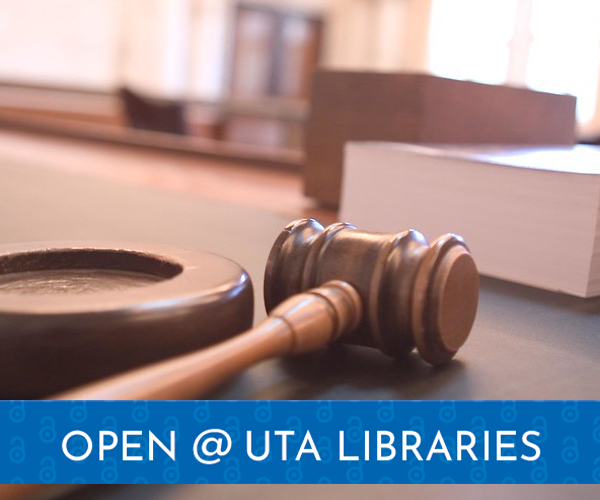
by Katherine Chapline


by Katherine Chapline
Special thanks to Dr. Leah McCurdy, Director of Open Partnerships and Services, for her contributions to this post.
This is the third post in a series on the UTA Libraries blog, entitled “Open @ UTA Libraries.” Check out the entire series to discover more work happening at UTA Libraries for the advancement of the open movement! This post discusses the legal doctrine of fair use. Most people in higher education have at least heard of fair use, but it can be a complicated topic. We hope to provide some clarity and specific fair use examples for UTA community members. As librarians, it is our role to direct patrons to resources and information so they can make better informed decisions about their work and research. We encourage you to share this resource broadly, to spread awareness about what fair use is (and what it is not) within your scholarly and educational communities.
Fair use is directly relevant to copyright law, which concerns the use and access of original works of authors including books, art, articles, music, and much more! Copyright is an exclusive set of rights that allows the copyright holder to copy, adapt, perform, and distribute their work. For others to copy, adapt, perform, or distribute a copyrighted work, they must seek the permission of the copyright holder. In many countries, copyright is automatic when a work is created. In the United States, a work must be fixed in a tangible form (like written in a blog post) before it is under copyright protection.
Fair Use is a doctrine in Section 107 of the Copyright Act, which states that fair use of a work “for purposes such as criticism, comment, news reporting, teaching (including multiple copies for classroom use), scholarship, or research, is not an infringement of copyright.” Under certain conditions laid out in Section 107, you can use a copyrighted work without permission of the copyright owner. This fair use doctrine was intended to promote creativity and prevent an inflexible interpretation of copyright law.
In order to determine if a specific use of a copyrighted work qualifies as fair use, you must examine all of the following four factors.
When making a fair use decision, courts are more likely to weigh in favor of nonprofit or educational uses of a work. Unfortunately, just because something is used for educational purposes does not mean it automatically qualifies as fair use. This is a common misconception in higher education!
Uses that are transformative, where the copyrighted work is significantly transformed by adding something new for a different purpose, are more likely to be weighed as fair use. For example, if a student wants to incorporate an existing artwork by another artist into a submission for a university art contest, they should make sure that the way they treat the existing artwork is transformative in nature. This is subjective, but should be carefully considered at the outset and throughout the process of use.
In recent court decisions regarding fair use, the first factor has been more heavily weighed than the other three factors. The court case, Bell v. Eagle Mt. Saginaw Indep. Sch. Distr., is a good example of a fair use case in which the court examines and weighs each of the four factors differently.
This factor focuses on whether the work used is published or unpublished. Use of works that are published are more likely to be considered fair use. If a published work is still under copyright protection, but out of print and widely unavailable, this may weigh in favor of fair use.
Courts also consider the creative nature of a work. Use of works that are factual are more likely to be considered fair use. Works that are highly creative would be less likely to be considered fair use. Think of a biology textbook versus a play script – using copyrighted material from the play script would be less likely to be considered fair use.
The courts look at whether a substantial percentage of the work is used, but they also examine if the use includes the “heart” of the work. This is shown in the case, Harper & Row Publishers, Inc. v. Nation Enterprises, with a small amount of copyrighted work used. In this case, the court ruled that the use was “qualitatively substantial” and not considered fair use.
Use that would negatively affects the market for a copyrighted work is less likely to be considered fair use. This also includes the market for derivative works. If no one decides to buy a published book because they can read most of it online, that will negatively affect the copyright holder’s market.
The fair use doctrine is an important tool for researchers, authors, and instructors to build upon other works and promote creativity. All four factors must be considered when making a fair use argument. If you have more questions about navigating the fair use doctrine, please reach out to librariesops@uta.edu!
The cover image for this blog post is "Gavel with Banner" by Katherine Chapline, licensed CC BY-SA 4.0. It is a derivative of the public domain image "Courtroom One Gavel" by Joe Gratz, licensed under CC0 1.0.
Add new comment